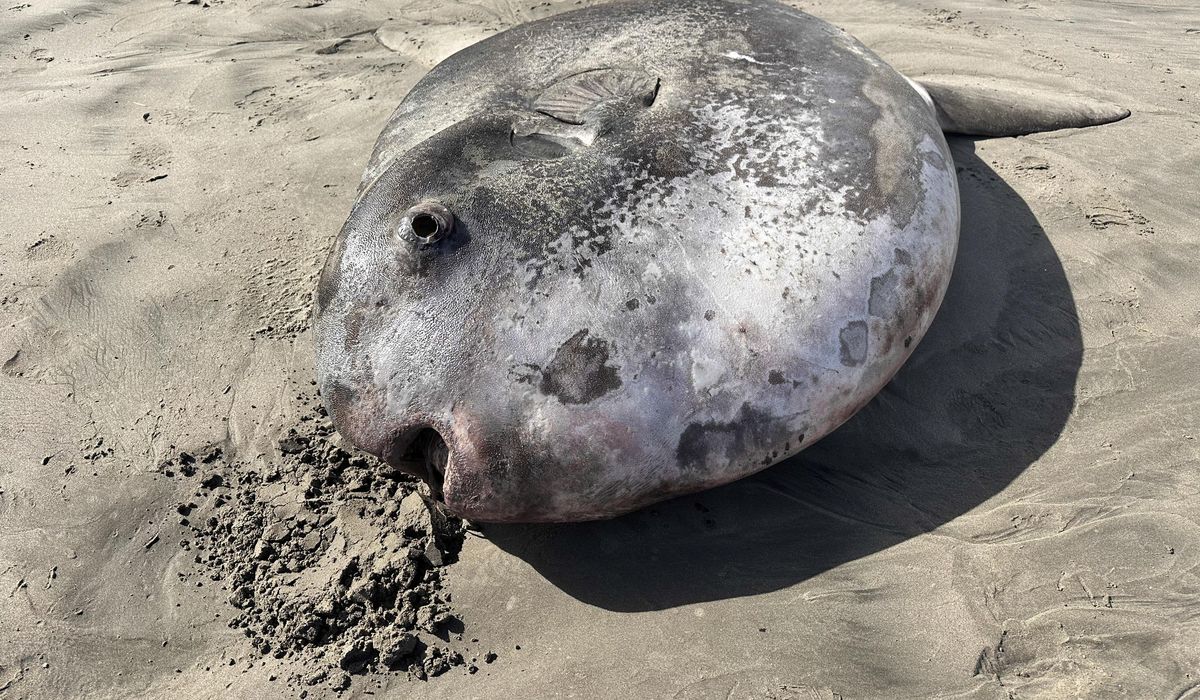


A 7.3-foot hoodwinker sunfish that washed up on a beach in Seaside, Oregon, this week could be the largest specimen ever sampled for DNA.
The rare hoodwinker sunfish, so named because it went undiscovered for years due to its similarities with the more common ocean sunfish, was confirmed to be a separate species in research published in 2017, the Seaside Aquarium posted on Facebook Thursday.
“The new species managed to evade discovery for nearly three centuries by ‘hiding’ in a messy history of sunfish taxonomy [or classification]. …That is why we named it Mola tecta … derived from the Latin tectus, meaning disguised or hidden. This new species is the first addition to the Mola genus in 130 years,” researcher Marianne Nyegaard said seven years ago in a release from Australia’s Murdoch University.
This particular fish was found Monday and drew crowds to the beach. Word of mouth spread on social media to Ms. Nyegaard.
She asked the Seaside Aquarium to get genetic samples, more photographs and measurements. The staff there obliged, and Ms. Nyegaard confirmed the fish’s unique dimensions.
The fish remains on Seaside’s Gearhart Beach, where it’s being scavenged by other wildlife, the aquarium said.
• Brad Matthews can be reached at bmatthews@washingtontimes.com.
